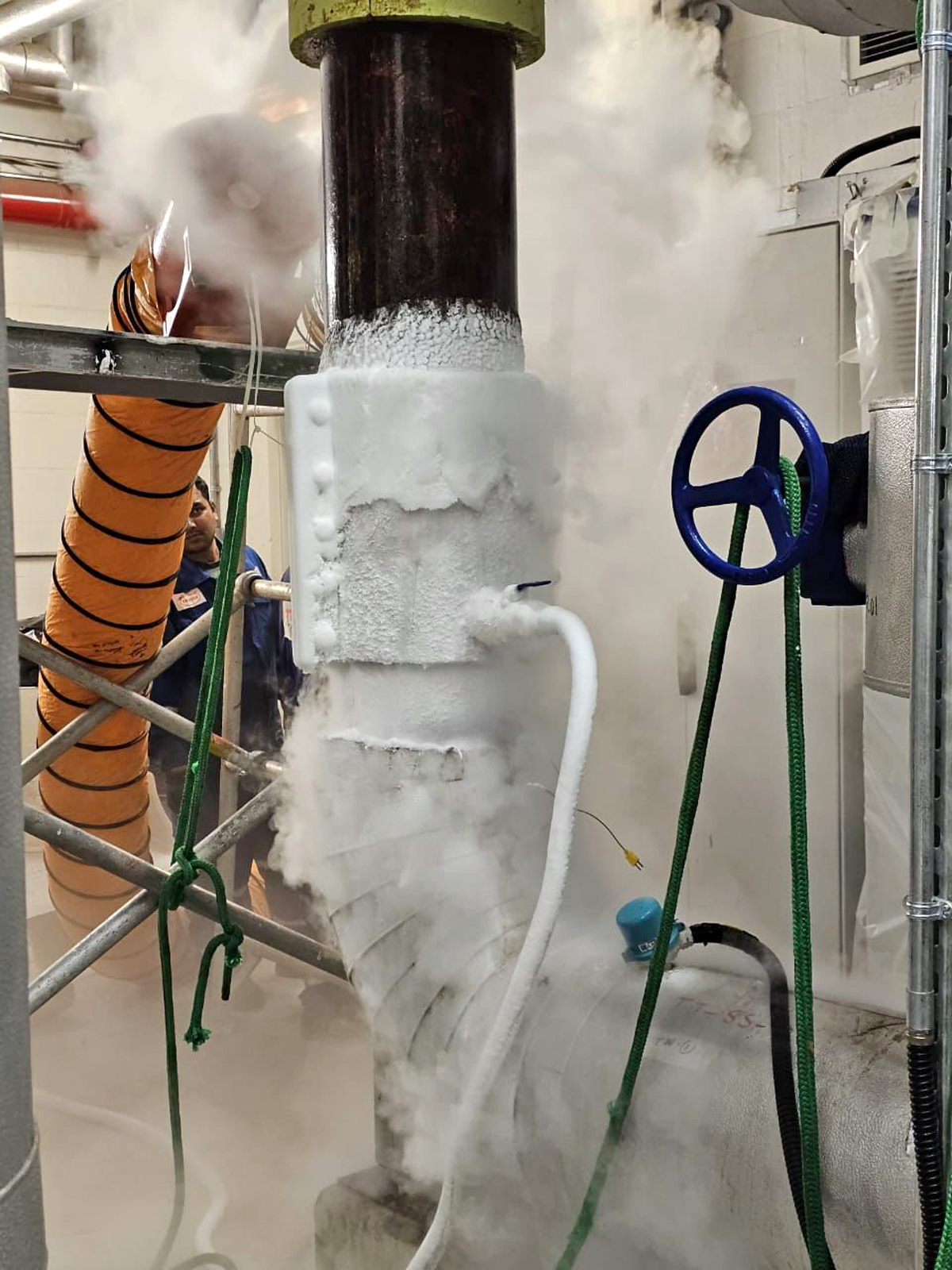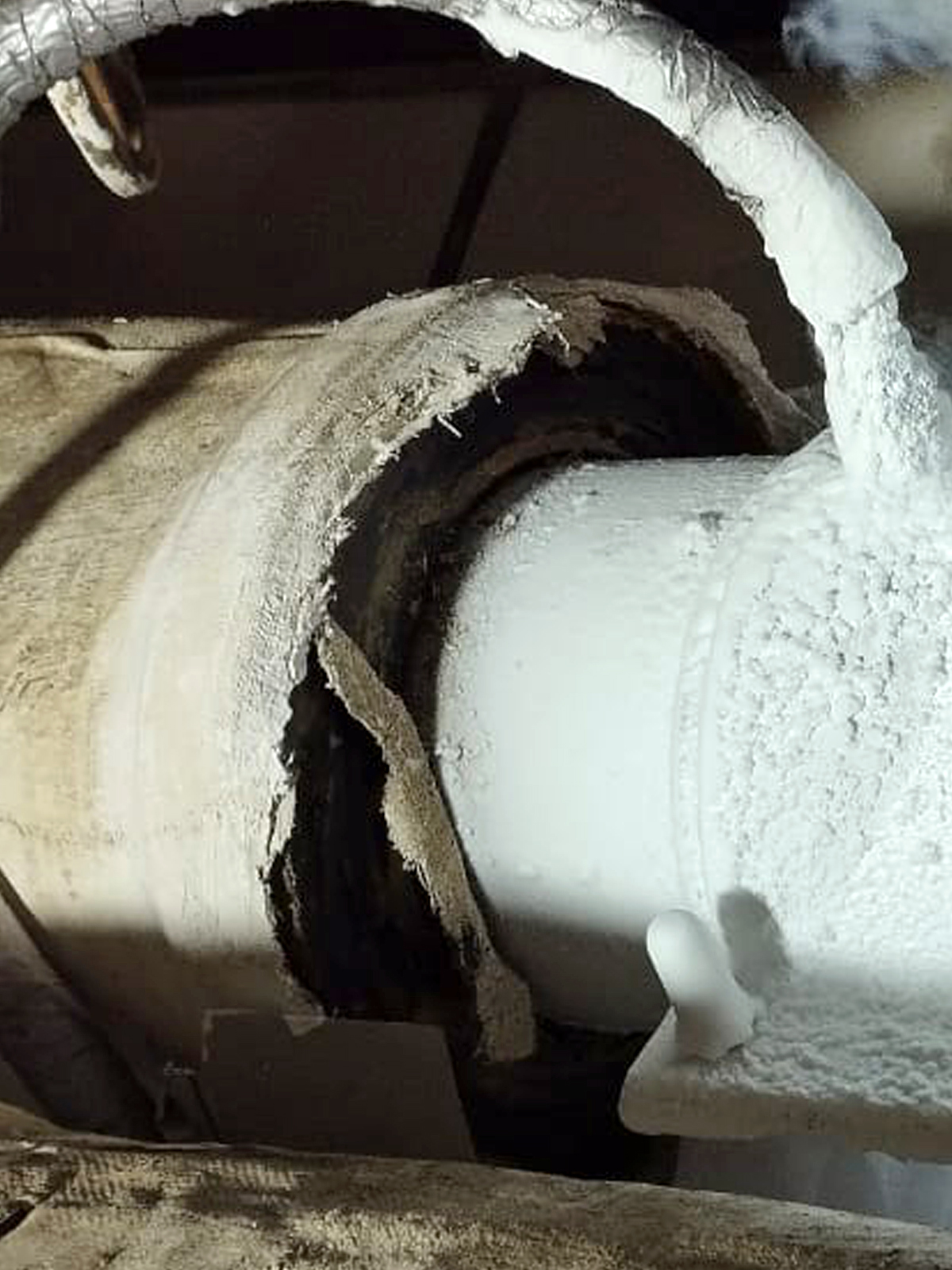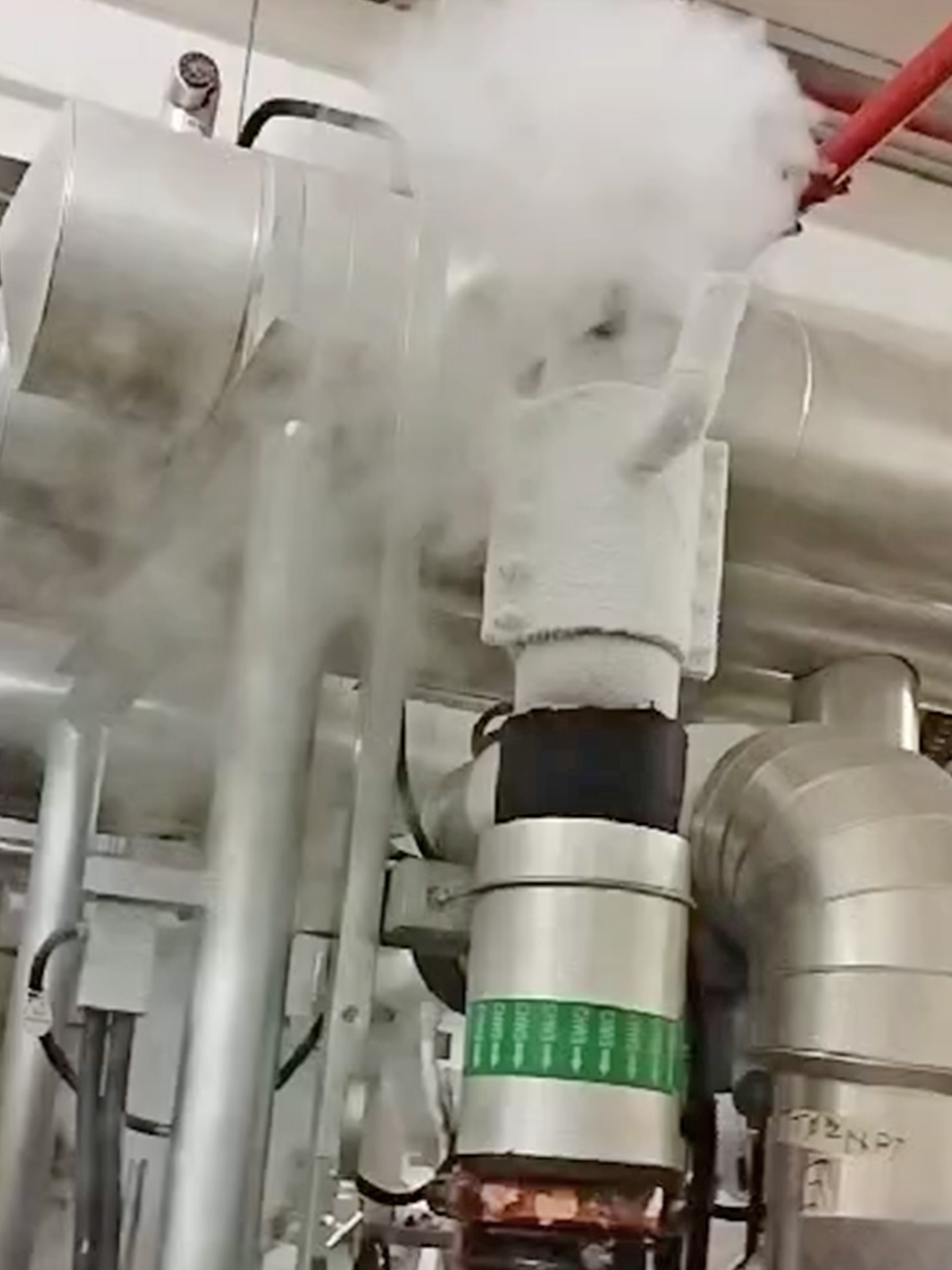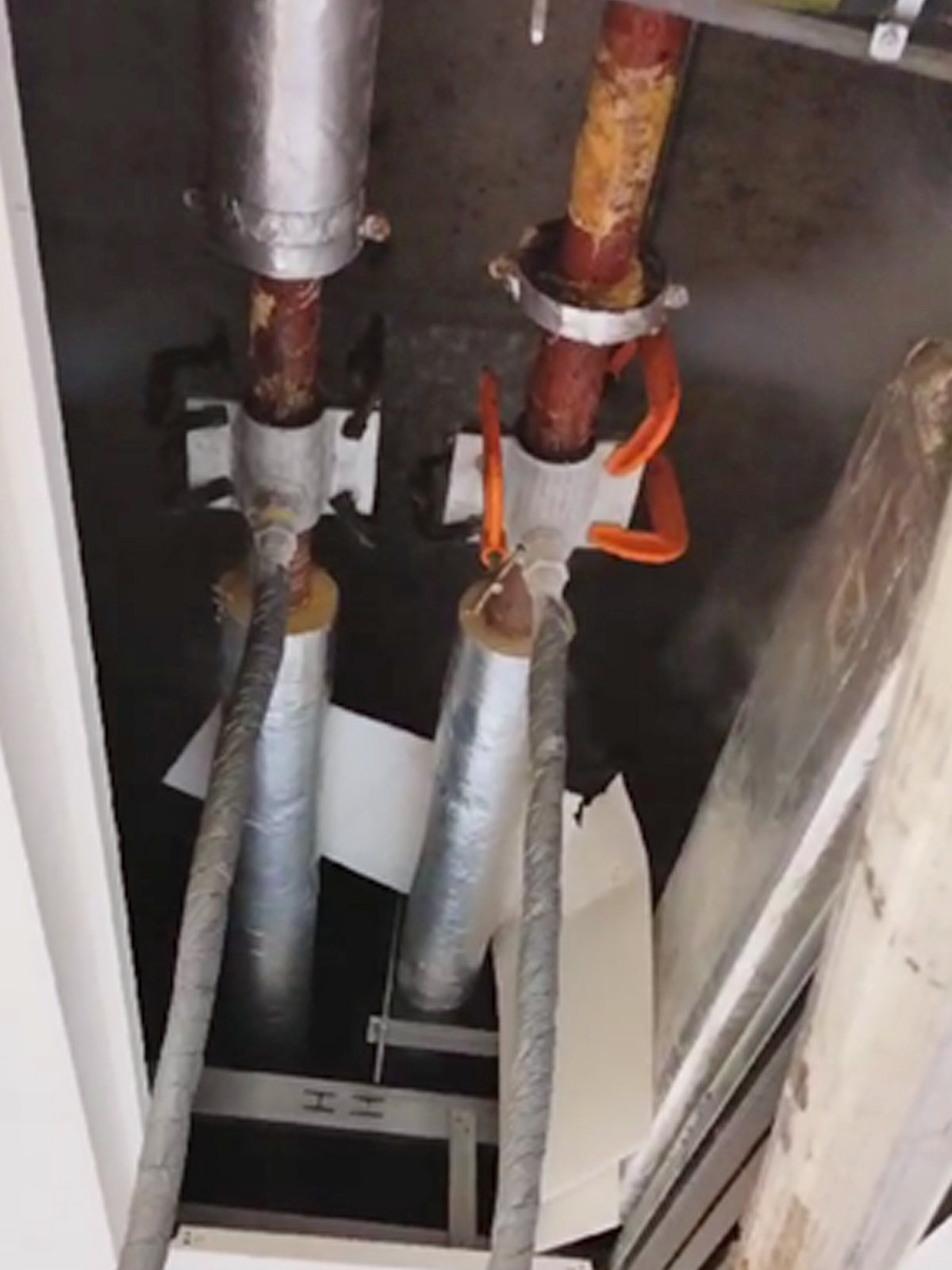Pipe Freezing
Overview:
Pipe freezing works by crystallizing the fluid within a pipeline to form a solid ice plug which makes easier and effective maintenance or repair of pipeline by isolating a section. This method is applicable to different materials such as carbon steel, stainless steel, and copper alloys, and can handle various fluids including freshwater, seawater, and crude oil. This method reduces the risks of leakages by avoiding any drain of the system and make it an efficient and safe option for pipeline work.
Features:
No System Drainage: Isolates pipeline sections without draining the entire system.
Versatile Material Compatibility: Works with carbon steel, stainless steel, copper alloys, and more.
Wide Range of Fluids: Suitable for crystallizing fluids like freshwater, crude oil, and chemical products.
Precise Temperature Control: Creates a solid, reliable ice plug for effective isolation.
Benefits:
Safe and Secure: Minimizes the risk of spills and environmental hazards.
Cost-Effective: Reduces downtime and eliminates the need for system-wide shutdowns.
Versatile Use: Applicable to various pipe materials and fluids across different industries.
Efficient Maintenance: Allows for quick and easy modifications, maintenance, and valve replacements.
Technical Specification:
| Parameter | Metric | Imperial |
|---|---|---|
| Min Pipe Dia | 100 mm | 4 inch |
| Max Pipe Dia | 609 mm | 24 inch |
| Pipe Temperature | 50° to 120° C | 122° F to 248°F |
| Fluid Used | Liquid Nitrogen | |
| Carbon dioxide | ||
| Material covered | Carbon Steels | |
| Aluminum Alloys | ||
| Cast Iron | ||
| Stainless Steel | ||
| Epoxy Coated Pipes | ||
| Nickel Alloys | ||
| Copper-based Alloys | ||
| Line Medium | Freshwater | |
| Glycol solutions | ||
| Seawaters | ||
| Effluents / Sewage | ||
| Produced water | ||
| Sludge’s | ||
| Crude oil | ||
| Fuel oils | ||
| Lubrication oils | ||
| Various chemical product | ||




